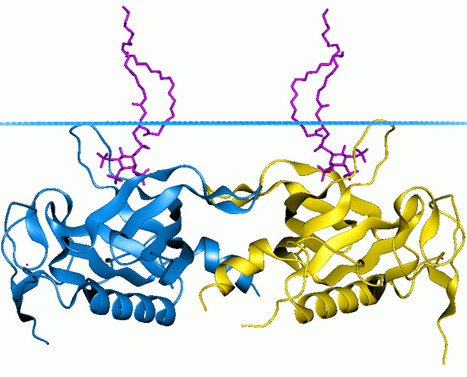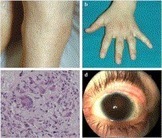Paolo Sfrisoa, , ,Francesco Casoa,Sofia Tognonb,Paola Galozzia,Alessandra Gavaa,Leonardo Punzia
a Rheumatology Unit, Department of Medicine, University of Padova, Padova, Italyb Ophthalmology Unit, Department of Neurosciences, University of Padova, Padova, Italy
http://dx.doi.org/10.1016/j.autrev.2012.07.028,
Blau syndrome (BS) is a rare autosomal dominant, autoinflammatory syndrome characterized by the clinical triad of granulomatous recurrent uveitis, dermatitis and symmetric arthritis. The gene responsible for BS has been identified in the caspase recruitment domain gene CARD15/NOD2. In the majority of patients, the disease is characterized by early onset, usually before 3–4 years of age. The manifestations at disease onset are usually represented by articular and cutaneous involvement signs, generally followed later by ocular manifestations which are often the most relevant morbidity of BS. In some cases the presence of fever is also observed; atypical cases of BS have been reported with cardiovascular, neurological, renal, intestinal and other organ involvement. The rarity and the variations in the severity and evolution of its expressions do not permit sufficient data about optimal treatment for patients with BS. The first step of therapy is represented by the use of corticosteroids and successively, in case of unsatisfactory response, by additional treatment with immunosuppressive agents. The results with biologic anti-cytokine agents, such as anti-TNFα and anti-IL1β, are different, particularly with regard to ocular morbidity. Clinical and genetic aspects of the familial and the sporadic form of BS will be discussed and focused on. A description of a case study of an Italian family is also included.
Blau syndrome, clinical and genetic aspects http://t.co/BALw5P69...
 Your new post is loading...
Your new post is loading...
 Your new post is loading...
Your new post is loading...


























Btk is the protein affected in XLA, a disease identified as a B cell differentiation defect. Btk is crucial for B cell differentiation and activation, but its role in other cells is not fully understood. This review focuses on the function of Btk in monocytes, neutrophils, and platelets and the receptors and signaling cascades in such cells with which Btk is associated.